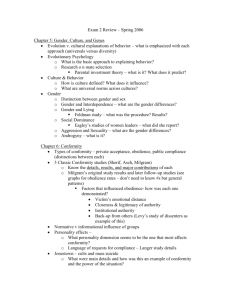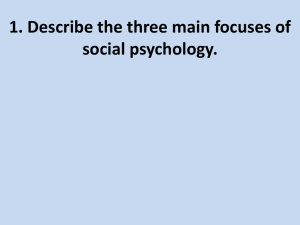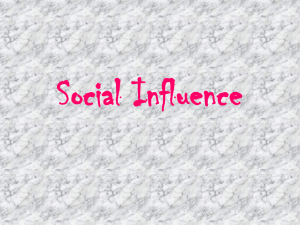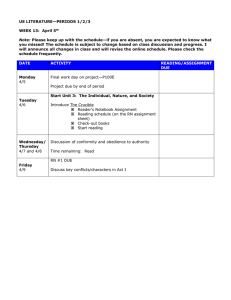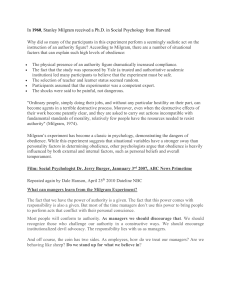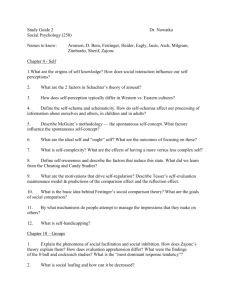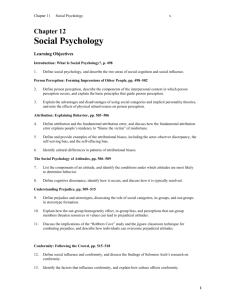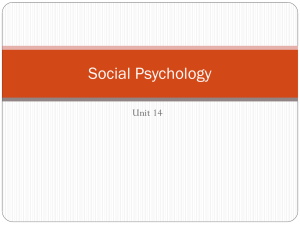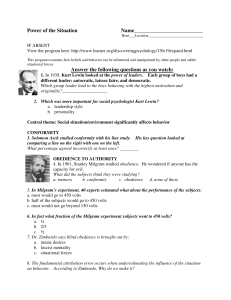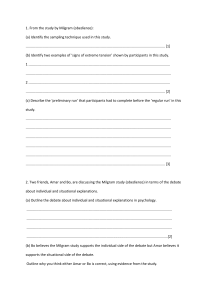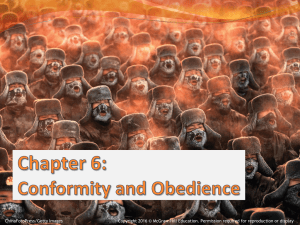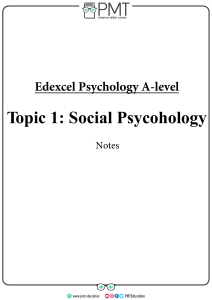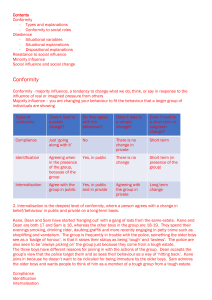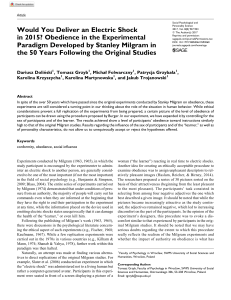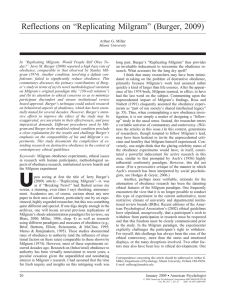Psych 154 Exam 2 Study Guide Spring 2016
advertisement
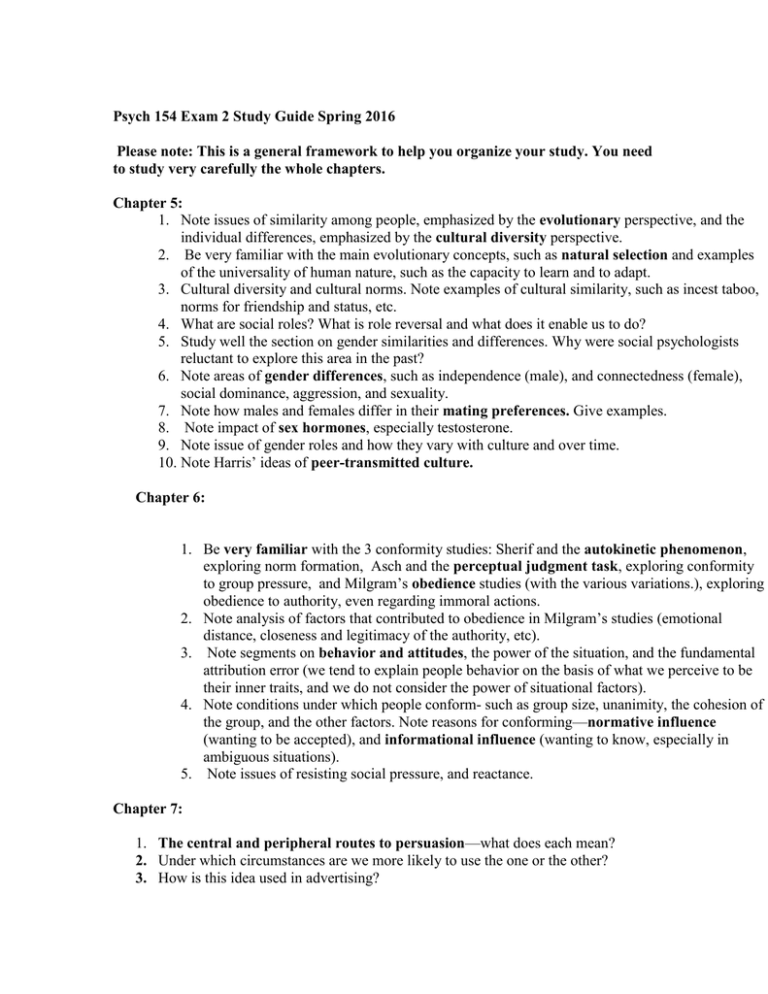
Psych 154 Exam 2 Study Guide Spring 2016 Please note: This is a general framework to help you organize your study. You need to study very carefully the whole chapters. Chapter 5: 1. Note issues of similarity among people, emphasized by the evolutionary perspective, and the individual differences, emphasized by the cultural diversity perspective. 2. Be very familiar with the main evolutionary concepts, such as natural selection and examples of the universality of human nature, such as the capacity to learn and to adapt. 3. Cultural diversity and cultural norms. Note examples of cultural similarity, such as incest taboo, norms for friendship and status, etc. 4. What are social roles? What is role reversal and what does it enable us to do? 5. Study well the section on gender similarities and differences. Why were social psychologists reluctant to explore this area in the past? 6. Note areas of gender differences, such as independence (male), and connectedness (female), social dominance, aggression, and sexuality. 7. Note how males and females differ in their mating preferences. Give examples. 8. Note impact of sex hormones, especially testosterone. 9. Note issue of gender roles and how they vary with culture and over time. 10. Note Harris’ ideas of peer-transmitted culture. Chapter 6: 1. Be very familiar with the 3 conformity studies: Sherif and the autokinetic phenomenon, exploring norm formation, Asch and the perceptual judgment task, exploring conformity to group pressure, and Milgram’s obedience studies (with the various variations.), exploring obedience to authority, even regarding immoral actions. 2. Note analysis of factors that contributed to obedience in Milgram’s studies (emotional distance, closeness and legitimacy of the authority, etc). 3. Note segments on behavior and attitudes, the power of the situation, and the fundamental attribution error (we tend to explain people behavior on the basis of what we perceive to be their inner traits, and we do not consider the power of situational factors). 4. Note conditions under which people conform- such as group size, unanimity, the cohesion of the group, and the other factors. Note reasons for conforming—normative influence (wanting to be accepted), and informational influence (wanting to know, especially in ambiguous situations). 5. Note issues of resisting social pressure, and reactance. Chapter 7: 1. The central and peripheral routes to persuasion—what does each mean? 2. Under which circumstances are we more likely to use the one or the other? 3. How is this idea used in advertising? 4. Be very familiar with the 4 elements of persuasion.. The communicator—what makes him/her credible and trustworthy? 5. What makes the communicator attractive? 6. The message: reason vs. emotion; 7. Fear-evoking—what is the impact? 8. Discrepancy. 9. One sided-vs. two-sided—which is more effective, under which conditions? 10. Note primacy vs. recency effects. 11. The audience—issue of age, the generational explanation, distraction, etc 12. Need for cognition
